Exploring The Innovation Ecosystem with Gamiel Gran and Gregory LaBlanc
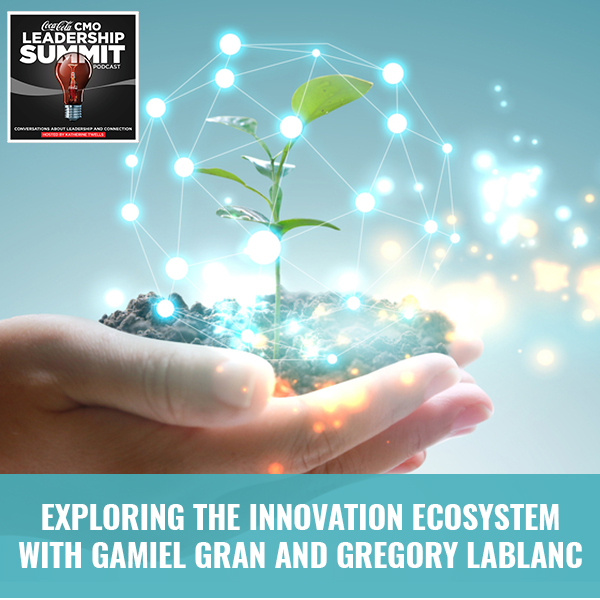
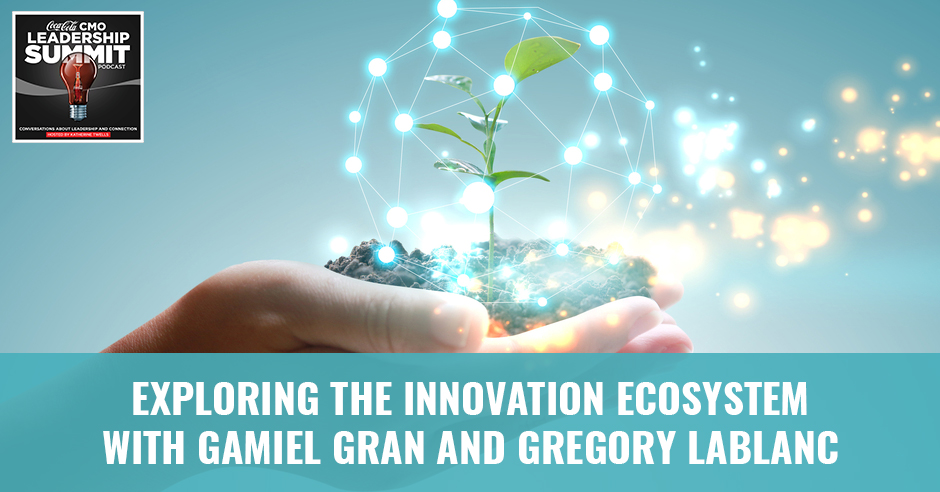
VP of Business Development from Mayfield Venture Capital, Gamiel Gran, talks to the chair of the Berkeley Haas Professional Faculty, Gregory LaBlanc about exploring the innovation ecosystem in the corporate world. With the fast-changing times, it is a must for businesses to learn how to cope with it; otherwise, they may find themselves stricken out from the game. Corporate innovation must sit at the center of it; and Gamiel and Gregory show some of the best practices of innovation from a corporate standpoint. They talk about what legacy companies could learn from startups, how to incubate ideas, what is a merit-based system, why retail has died, and more!
—
Listen to the podcast here:
Exploring The Innovation Ecosystem with Gamiel Gran and Gregory LaBlanc
We are bringing you a conversation between two great minds. Gamiel Gran is the VP of Business Development from Mayfield Venture Capital and is an incredible strategic partner. Greg LaBlanc is the Chair of the Berkeley-Haas Professional Faculty at Berkeley University and lectures on innovation, decision-making and new technologies.
—
This is Gamiel Gran here with Mayfield. I run the business development portfolio services platform at Mayfield. We’re an early stage venture firm out in California. I’m thrilled to be here.
This is Greg LaBlanc and I teach at the University of California at Berkeley. I’m primarily in the Haas School of Business.
Corporate Innovation
We had an opportunity to participate in this CMO Summit that Coca-Cola has pulled off. They’ve brought together some amazing speakers. A lot of this is around connection but clearly around the area of innovation and how to get your arms around innovation. Greg, I appreciate you spending time here talking with me. Part of this panel discussion was to get our arms around some best practices of innovation from a corporate standpoint, some learnings. You’ve got an amazing Rolodex of ideas from an educational and methodology process that I’d love to dive into. I have this perspective from the venture world about how startups can bring new ideas and how corporate venture teams can bring themselves closer to that world. Why don’t we start with you introducing yourself? Tell us a little bit about your background and your point of view around how corporate innovation is changing nowadays in the world.
We’re both from the Valley. I live out in the Bay Area. We’re continually surrounded by all these startups and the Kool-Aid that surrounds the startups or is consumed by the startups. Whenever I go and talk to some enterprise folks and you talk to people that are in businesses that have been successful and are continuing to be successful. They seem to be grappling with trying to figure out how to be more like startups. The things that have made companies successful in the past are oftentimes the things that are antithetical to what makes startups successful. In a lot of legacy successful companies, it’s about developing routines. It’s about figuring out best practices. It’s about making things scalable across the organization in ways that don’t require continual tinkering. Yet in the startup world, you’re continually tinkering, you’re continually failing, you’re continually experimenting. As the world changes much more rapidly than in the past, the legacy companies have to think more like startups or at least have internally the designated startup folks embedded within.
In the startup world, you're continually tinkering, failing, and experimenting as the world changes much more rapidly than in the past. Share on XThat speaks to a quandary that I often defined as the impedance mismatch between the corporate environments. A steady state, regularly reported earnings, regularly reported process in organization with a level of depth of use cases and don’t want to disrupt things. Almost from an existence standpoint need to keep things steady. Meanwhile, they want to access this emerging new technology innovation and want to befriend it. Frankly, the two don’t fit together. It’s almost like a square peg, round hole problem. When you talk to big corporations, the legacies as you call them, what do you do to help them put operational excellence around this problem? At some level, they’ve got to one, be self-aware that we’re not great at this innovation. We’re not a venture capitalist. We’re not a startup but we have a huge depth of science and process and practice around doing things. How do we avail ourselves to this disruptive innovation?
The first thing is to help the companies understand how much innovation they need. You can have too much or too little. The answer to every business question is it depends. I like to use analogies from biology, like in evolution. We know that Darwinian Evolution is built around variety in the genome. The problem is that if you’re at a steady environment, if you’re in a stable environment, variety is expensive. If you have children with six fingers or eight fingers and the world hasn’t changed. You’re not underwater so you don’t need those webbed feet. That’s a cost. That’s going to be a continual drag on your income statement. That’s going to be a continual drain of your resources to be doing all these experiments when we know that the answer is don’t change, keep cloning yourself.
If you’re in an environment that’s changing rapidly and you’ve eliminated all the mutations. You’ve eliminated all of the variability in your genome, then you’re going to go extinct quickly. That’s why I like to say that one of the best inventions ever is sex. Not for the obvious reasons, but because it facilitates the mixing up of the genetic material. If you understand that experimentation and variability has a benefit and a cost and then you understand how rapidly is your environment changing, therefore how much experimentation do you want? The next point that I would make is the biggest innovation and the biggest revolution is in the area of management.
I’m trained as a historian and I like to talk about the Industrial Revolution. People think that the Industrial Revolution was caused by a steam engine and it wasn’t. It was caused by a change in management practices, which enabled companies to take advantage of the steam engine which had existed for decades before it had been monetized. Nowadays, everybody’s focused on data science and IT and technology and cloud computing. Don’t get me wrong, I teach courses in that stuff and it’s extremely important. At the end of the day, none of that stuff matters if you haven’t revolutionized your managerial practices. That’s the most important thing. It’s the prerequisite to anything else. It’s also the most difficult thing to change because ripping out one’s IT system and putting it in another is quite easy compared to ripping out one mindset and replacing it with another.
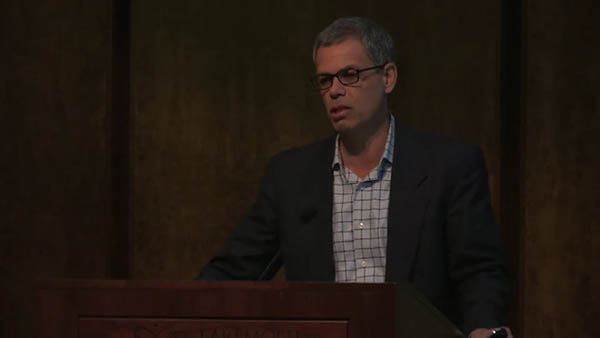
Innovation Ecosystem: Data science and technology do not matter if you haven’t revolutionized your managerial practices.
The Three I’s Of Corporate Innovation
At our venture capital firm Mayfield, we spend a lot of time with corporate teams who come out to the Silicon Valley for what we call innovation tourism. I challenge these teams to come up with their key priorities, meaning give me some definitive objective and areas of the objective. They do a good job of that. We showcase a number of companies, either companies from our portfolio or much further beyond our own portfolio. These are ways to create some new ideas and frankly to give some of the startups some feedback from these corporate innovation teams. At the end of each of these discussions that we have and we call these innovation briefings and we’ve created a platform to do this, I ask them, “What will you do next? Who in this team?”
You’ve brought your corporate team here. You all flew out here from wherever you are to the Valley. You’re spending two, three days here, etc. How will you execute on the next step? This taking action thing, I’ve broken it down into what I call the three I’s of corporate innovation. This innovation terminology is a bit overused. The three I’s are the ideation phase. How do we create and organize our ideas? Do we look external, internal, etc.? How do we incubate these? We identify one, how do we bring these little five guys in a startup into this huge multi-thousand, 130-year old organization? How do we bring those two together? How do we realize some benefit? The last phase of the three I’s is how do we invest? Do we invest? Do we buy the company? Do we become a venture firm ourselves? Do we create a commercial relationship or what? If we were to break those down, tell me what you think on the ideation phase. You talk about it’s the management. How does management absorb this cultural shift ideate around innovation?
We were discussing the difference between absorbing ideas that originate outside of the organization and ideas that originate inside the organization. One theory might be that the organizations that have already mastered process internally for sourcing and evaluating their ideas internally, those are the ones that will find it easiest to source ideas from outside of the organization. I want to talk in management, forgetting about startups for a second, the idea of a typical legacy company. The idea you would have, idea origination, idea evaluation and then idea execution. This is standard operational excellence. You need to have a system in place so that everybody in the organization feels comfortable injecting ideas, injecting thoughts, providing feedback and then having a switchboard. It need not be a central switchboard, it can be an edge switchboard that evaluates those ideas and then executes them.
What I find in most and a lot of legacy companies are that you have idea constipation. You talk to managers and say, “The last thing I need is more ideas. Don’t give me any more ideas. I’ve got enough ideas to keep me busy for many years.” What I’m worried about is how do I keep the lights on now? How do I put this fire out that I’m dealing with? These people who go back from innovation tours with all those wonderful, “This is great. We should do this,” they get back to a huge pile of emails. They put their head down and then their whole tour becomes a trip to Disneyland. They took some pictures and maybe they Instagrammed it, but then it’s done. Organizations have to think first and foremost like, “How are you dealing with ideas that originate within your own organization? Have you cleaned that house up first?” I’m not saying you should wait to start listening to ideas outside of the organization but the process, that switchboard for evaluating ideas works internally and externally. Having a permeable membrane that allows you to absorb ideas from the external environment, it becomes an extension of your idea of processing capability.
If you're in a stable environment, variety is expensive. Share on XHow much internal is external is your key point there. Often when I meet with these teams, they’re self-deprecating at some level about their lack of ability to innovate. I said, “Are you asking your team? Are you giving enough oxygen for that? You’re rich with ideas, of potential because you’ve got brilliant insight. You understand your industry certainly better than a little startup does.” Perhaps that marriage opportunity where you can bring that startup who is raw, agile, eager to please and depth of use cases, depth of experience, industry best practices. If the two of you can marry somehow in the middle, that’s where the catalyst begins. In the idea of ideation, I often get the question, “Who owns this?”
I once read a piece that it was McKinsey who wrote this concept many years ago, The Three Horizons of Growth. The three-horizon concept puts purpose and ownership to this question. I wonder what your thoughts are on this and the idea that essentially everybody owns idea making. Innovation ought to occur across the whole organization but there are purposeful ways to break it down into owners based on particular objectives. The first horizon thesis is everything that we’re currently doing now in the next ten or twelve months, within a year timeframe, ought to be looked at for improvement. Everybody across the organization from the receptionist to the CEO ought to be thinking, “How do I improve and get time back on everything we’re currently doing?” That’s current operations and essentially that’s an ongoing thing and we ought to have enough oxygen for that conversation all the time.
The second horizon is beyond twelve months. Let’s say the next two years out. We ought to be looking for areas to improve with an adjacent new offering. How do we enter a new market that complements our current market? It’s not disruptive, it’s complementary. This is where you can incubate ideas internally. That’s the best practice. You understand that model and you complement it with new technologies. The third one, the highest risk, is three or four years beyond where you might even break one of your current businesses. You truly disrupt or enter a whole new market. This is maybe a closed-room conversation. This is a fairly strategic group that doesn’t want to upset the current operations team. There’s purpose, ownership and even metrics to each of those groups, which then gives clarity for how to think about it. What’s your reaction to that?
That’s a great question in terms of who owns it and it does make sense to say that everyone in the organization should feel empowered to innovate at some level. Once you say that, you don’t expect the frontline, customer-facing sales folk person at a retail establishment to be thinking about digital strategy or where the organization is going to be in ten years. The way I like to think about it is in terms of optimization. I’m an academic. I think in terms of things like fitness landscapes. Everyone has within the short-term horizon. There are ways that you can optimize. There are individuals at that low level that can provide insight into how to do what you’re currently doing better.
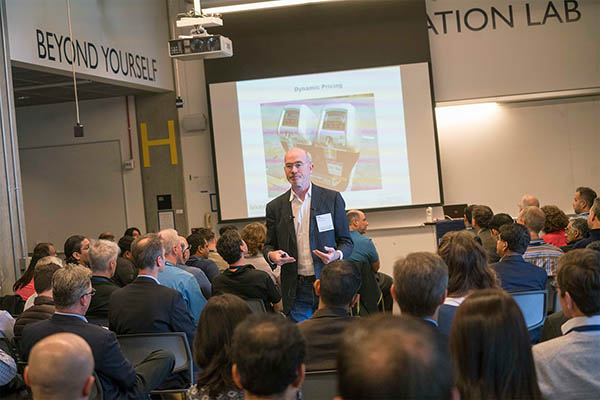
Innovation Ecosystem: Everybody across the organization—from the receptionist to the CEO—ought to be thinking because essentially, everybody owns ideas.
Even if you’re a custodian, you could probably have ideas about how to do that job better and make that process better. All of that is working really well and you’re sitting on the top of that hill. There might be a much bigger hill a couple of hundred yards away. You need someone at the next level up to start scanning the environment and seeing, “Are we sitting at a local maximum?” There’s a global maximum out there that we could be finding and that requires us to look out on the horizon. You think about Blockbuster, everyone likes to beat on Blockbuster. You could be a manager at Blockbuster and be thinking, “Have we optimized pricing? If we cut the price of this much, raise it that much, we can squeeze out a few more pennies of profit. Do we have optimal shelf space designed? Do we have the optimal checkout experience at the cash register?” You do want people originating ideas about, “How to smooth the checkout process? How to reorganize the inventory on the shelves?” You want people to be that focused on innovating in that domain. If you don’t have people saying, “Are people even going to be checking these things out of the store ten years from now?”
Once you’ve decided how to allocate the responsibility for those levels of innovation and you have communication up and down through those different levels. The problem that you’re going to have across all levels, even if you’ve done that correctly is how do you get those people to devote the time to think about the innovation? As opposed to becoming overwhelmed by the process, the day-to-day. If a surgeon has to worry about cleaning the scalpels and has to be worried about mopping up the blood, then they can’t be a surgeon. It is important that the day-to-day and the systematic stuff is taken care of so that the people who have to think about strategy can do so and have the time to think about it.
Incubating Ideas
Let’s talk about the next stage. Let’s identify a couple of cool startups. I’ve met with a few interesting venture firms and they’ve introduced me to some cool companies. I’m ready to “incubate” one of these ideas. What have you learned as far as best practices and maybe worst practices or areas of weakness from a corporate standpoint? How have people gone about that or how companies have gone about that?
I don’t think anybody has the secret sauce. A big part of it is making sure that the day-to-day stuff is running sufficiently well. Those individuals have had time to think about innovation. That’s number one. The second thing is about leadership and about culture. I see a lot of organizations that are idea-driven organizations and I see ones that are a complaint or request-driven organizations. In the latter type of organization, people see the people on their team as constituents. They feel their responsibility is to satisfy their constituents. The constituents are coming in with all these requests, “We need this. We need that.” We need a budget for innovation. We need this, that, this type of tool, etc. They begin to view their team members or the other members of the organization as annoyances, as complainers, as people that are hassling them. They do everything in their power to make them go away. When their rank-ordering all of the different requests that are coming in, they rank-order them on the basis of who can make their life difficult or easy. Carrots and sticks become important and then the organization evolves into politics. Even if you’re someone who starts off as an idea-driven person, you become a complainer over time.
Organizations that have mastered sourcing and evaluating their ideas internally are the ones that will find it easiest to source outside. Share on XIn an idea-driven organization, even if someone comes in and complains and says, “This sucks.” The leader will say, “That’s an idea.” The importance there is that if everything becomes an idea and then instead of ideas being a nuisance, they become a blessing. Feedback instead of being something to dodge becomes something to seek out. The way in which you rank-order the stuff that’s coming in is based on merit and not based on who’s got the power or who screams loudest. This gets you away from the burning platform, which is you only pay attention to things when the platform is blowing up. What you’re doing is you’re incentivizing people to basically light the platform on fire to get your attention as a manager.
At the leadership level, making it clear that your organization is going to be idea-driven and that ideas are welcome. Pushing all the way down to the lowest level the idea that feedback is a gift. If you go to Facebook, for instance, you see signs everywhere. Feedback is a gift. I chaired a panel at Facebook and the continual theme was that experimentation is encouraged, ideas are encouraged and all ideas will be listened to. Everyone will be given a leash, albeit a short leash to try out various ideas. If they fail, everybody’s okay with that. That’s a cultural thing and it’s driven by leadership. Not just at the CEO level but every team leader has that idea.
Merit-Based Process
At the Summit, we were offered some interesting new company ideas as well as some pretty scary facts about the transformation of retail, the digital world disrupting things and delivery-based systems. At some level, it’s exciting if you’re in front of it. We have amazing new technologies available, but at the same time there’s this existential, “Can we survive?” How does a CMO who’s bearing the weight of these sorts of decisions and putting to your point a merit-based system together, determine how to invest in the right game changers versus noise that, “We’ve got to have a better social feed,” all these sorts of things screaming at them all the time and only so many hours in a day. How do they make the decision and go about that merit-based process?
I’d say it also boils down to the two different approaches, the local maximum and global maximum approach. On the local maximum idea, fine-tuning your marketing machinery so that you’re creating the right products for the right people at the right time. It’s used the metaphor of automation. It’s having the right sensors in place. Having the right actuators in place. Having the right decisioning in place. By sensors, you need to have the right data. It needs to be timely. It needs to be fine-grained. Whether that means leapfrogging over your channel partners to the POS or using a loyalty program to get customer activity or partnering with Facebook and Google. Getting the right data is important.
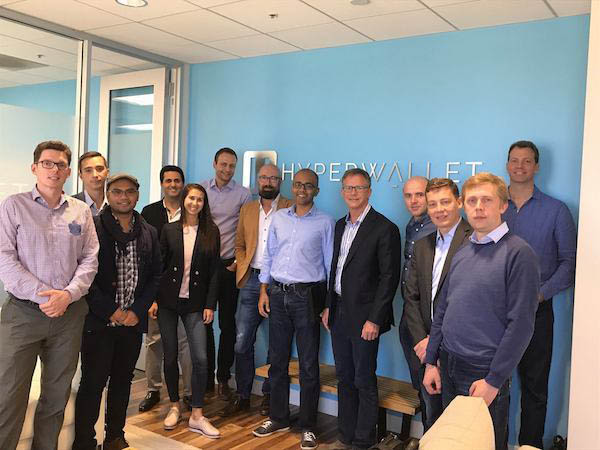
Innovation Ecosystem: Feedback is a gift.
Having the actuators in place, meaning you can respond in a timely manner, act quickly. Provide the product that the customer is looking for in a fine-grained way and timely way. Having the decision-making ability almost in an automatic way, generate the product and the advertising content that matches up with the product and the customer. That’s extremely important. If the actuators don’t work and the decisioning doesn’t work, there’s no point in collecting the data. I ran into a lot of organizations that are like, “We need a data program. We need a data strategy. We need to start collecting all this data. We’re going to throw it up into our data lake. It sits there and gathers dust because they can’t move fast enough to do anything with it.
If your sensor data is like, “What does the customer want? What did they do five minutes ago?” That’s great. It’s better than knowing what they did a year ago. How is that going to tell you what they’re going to do in a year? That is where the strategic folks have to get out of the room. Get out of their command center where the data is streaming in and go outside of their industry. That’s what is nice about this Summit is that people are hearing from folks that are coming from different perspectives. If you’re in CPG or retail, you could learn a lot about what your customer is going to do by getting out of the building and talking to people who may have some advanced insight into where things are headed.
Death Of Retail
There were some predictions about the disruption going on and how much is shifting and how rapidly it’s shifting. If you were to step back and say, “What does this world look like for retail or for a CPG or for quick serve?” For a brand of some note, let’s say five years out. What are the big disruptive markets to help put some purpose to that CMO agenda that they ought to be thoughtful about? Have the sensors, being cognizant of the ever-changing world. How would you help prioritize what are the main focus areas?
First of all, I would say most retailers are dead. They don’t know that they’re dead, but they’re dead. Simply because they haven’t mastered these trends. Part of it is operational, big inventory levels, a slow design process that takes you a year to design a product and go to market. It’s too late. I like to say that every product is a perishable product now. Its maximum value is the moment you make it and then it starts to decay after that, even if it’s durable. There’s no such thing as durable good anywhere. Everything is perishable. Those online retailers when they go into bricks and mortar world, they outperform the legacy bricks and mortar retailers and it’s shocking.
If every piece of everything becomes an idea, then instead of them being a nuisance, they become a blessing. Share on XTake an example like Warby Parker. There are eyeglass retailers that have been doing this for many years. They’ve been in this business for a long time. Warby Parker comes along and they go digital. It’s all digital channels. They do their thing. They do well, but the bricks and mortar people think, “That’s a different channel. They win that channel but we own this channel.” Warby Parker opens up bricks and mortar retailer. They knock the socks off these guys with little experience in bricks and mortar retailing. It’s because they question every single thing bricks and mortar retailers do. They say, “You don’t collect data on what people look at in the store? That’s crazy,” and they had to even go and aggressively seek out new technology that would enable them to do. If you’re digital, you know it makes sense to track everything that people look at or what they put in their basket and take out. It makes sense to put into your fulfillment center the things that you think are going to be ordered in that geography based on the customer purchasing history and so forth.
Stuff that seems obvious to people outside of that domain is relatively new concepts for people in the bricks and mortar world. The bricks and mortar world, it’s all going to be about quick data. The data that’s picked up in the environment. Once that level is set, then the bricks and mortar environment can be all about what makes the bricks and mortar environment unique and cool. Bricks and mortar aren’t going to go away. It’s going to be profoundly different. I’m someone that never buys anything bricks and mortar. When Amazon first came out, I was like, “This is it. I’m done.” I went from eight hours a week in bookstores to zero overnight. It was like, “This is changing my entire life.”
Summary And Takeaways
I wonder if we can wrap it up with a bit of a summary or a takeaway. This Summit has been amazing. We had great conversations with CMOs. They seem all lean-forward from a perspective of learning, wanting to connect with one another, and wanting to hear what others are doing. If you were to provide a summary from this concept of corporate innovation, what would you recommend is that takeaway action? Let’s say I’m the CMO. I’m about to leave here from Nashville, get on a plane and I want to reflect on what I learned and do something. What would you recommend they do?
There are many different things that they could do. Number one, your IT house has to be in order. This is something which we don’t explicitly say, but it’s almost implied by everything that we do.
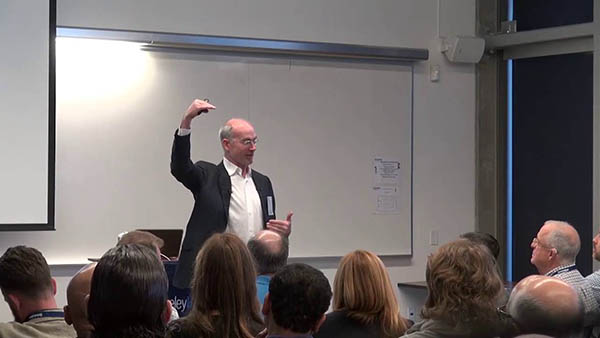
Innovation Ecosystem: You don’t have to know how to code, but you need to understand the limits and the opportunities that are created by all aspects of what technology has to offer.
Do you have the systems to collect the data?
Do you have a good understanding of the software? Your business is going to be a software business.
You’re a technologist, not just a marketer.
You have to be a technologist and the idea that there’s this CIO over there in the corner who handles the tech and then everyone else handles the business. That’s done. The CIO has to be a business person and you have to be a technologist. You don’t have to know how to code, but you need to understand the limits and the opportunities that are created by all aspects of what technology has to offer. If your company is not a technology company, it’s a dead company. That’s number one. Number two is preparing for continual improvement. I don’t mean continual improvement just on the margin. Continual improvement means that you have to make sure that you and your team manage your time so that you’ve set aside time for innovation.
You don’t have all the ideas in the world. Encourage others. Share on XIn the DevOps world, they have a great way to think about how people use their time. I would say everyone should do a time audit. I would say throughout the organization, do a time audit. If you’re doing unplanned work, putting out fires, figure out how much time you’re spending on that. Figure out how much time you’re spending on routine work. Figure out how much time you’re spending on how to refine and perfect your routine work and then how much time are you spending on ideating. Most organizations, the idea didn’t get squeezed out immediately. As soon as you get back from your Silicon Valley trip that’s gone. Even the part where you’re trying to refine and perfect what you already do, that usually gets squeezed out. Then you have the tyranny of the planned work. It’s in competition with the tyranny of the unplanned work. I would do a time audit on your team and figure out how are you spending your time? That takes us back to the sacred space. Our speaker, Gilbert, talked about having a sacred space for your own personal productivity. I would say that every executive needs to carve out a sacred space of time and mental energy to think about innovation and what’s next. That will percolate that all the way down through their team.
Those are three great ones. To add to that, the idea that Katherine and her team presented that this is a connect event. She closed the meeting by saying, “How do we keep this organic connection together?” It’s a quandary but I would offer the action, pick up the phone and call your peers. Take some bold moves and befriend people way beyond your peer group. Even your competitive peer group so that you are forcing yourself to think about new ideas that are different. Go meet with startups would be my other ad. Learn from startups that are pushing the envelope. There’s something that I always hear when I present these companies or have these companies present to corporate teams. They wonder if this is incremental or game-changing. I said, “Is it forcing you to think differently about the problem statement? Is it allowing you to be a bit more imaginative than your current environment allows?” To your point of this sacred boundary to think about it, and to allow with your time audit thesis more time to it. I provoke it to be even more aggressive and push yourself to be creative about how can you change the game. You might not have all the ideas or force or peer networking. Leverage this Summit that Coke has created to do that. With that, thank you.
Thank you.
Important Links:
About Gamiel Gran
 Gamiel Gran’s role is all about having strategic impact – specifically across the companies in Mayfield’s current portfolio. Accelerating impact for the portfolio companies is measured in areas such as early product design input, market adoption, go-to-market, and strategic partnerships and alliances. Gamiel leverages an extensive, global network of experts called the “Mayfield Edge.” He manages a Mayfield Network of CXO’s (CIOs, CISOs, CTOs, and line of business leaders such as CMOs) who partner with Mayfield for their own needs to access the top innovative technologies.
Gamiel Gran’s role is all about having strategic impact – specifically across the companies in Mayfield’s current portfolio. Accelerating impact for the portfolio companies is measured in areas such as early product design input, market adoption, go-to-market, and strategic partnerships and alliances. Gamiel leverages an extensive, global network of experts called the “Mayfield Edge.” He manages a Mayfield Network of CXO’s (CIOs, CISOs, CTOs, and line of business leaders such as CMOs) who partner with Mayfield for their own needs to access the top innovative technologies.
Gamiel brings more than 25 years of operational and venture capital experience to the Mayfield team. He previously served as Chief Strategy Officer for SOASTA and was responsible for ongoing operational improvements in sales, marketing, channels, plus strategic partnerships, corporate development, and investment support. Gamiel was also a partner at Sierra Ventures, responsible for leading the Sierra CIO Summit attended by over 100 Global CIOs for eight years. Also during his career, he has held executive leadership roles at IBM, Oracle, BEA (acquired by Oracle), Asera, and Cassatt (acquired by CA).
Gamiel is a UC Berkeley graduate. Gamiel’s outside passion is education, and especially on providing early internship access to the next generation of employees. He is currently leading an effort for Cal Poly on this front, and has served similar roles as a parent board member for Claremont McKenna College.
About Greg LaBlanc

Corporate Innovation, Ideas, Innovation Ecosystem, Legacy Business, Startups
Lecturer (continuing)
Distinguished Teaching Fellow
Haas Finance Group
Education
LLM Program, Boalt Hall School of Law, UC Berkeley
JD, George Mason University
ABD, Financial History, University of Pennsylvania
BS, Political Science, Wharton School, University of Pennsylvania
BA, History/Economics/Philosophy, University of Pennsylvania
Positions Held
At Haas since 2005
2005 – present, Lecturer, Haas School of Business and Boalt Hall School of Law
1999 – 2005, Instructor, Department of Economics, University of Virginia
1995 – 1999, Lecturer, Department of Economics, Duke University
1994, Lecturer, Departments of Finance and Management, Wharton School, University of Pennsylvania
Current Research and Interests
Selected Papers and Publications
Teaching
Honors and Awards
Join The Coca-Cola CMO Leadership Summit Podcast community today: